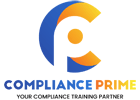The pursuit of affordable housing is a fundamental concern for many Americans. As the cost of living continues to rise in various regions across the United States, government programs have been established to assist those in need of affordable housing solutions.
Among these programs, one term frequently mentioned is “Covered Housing Program.”



In this blog, we will explore what Covered Housing Programs are, how they operate, and their significance in addressing the affordable housing crisis in the United States.
Understanding the Covered Housing Program
A Covered Housing Program is a category of federal initiatives designed to offer affordable housing options to low-income and vulnerable populations.
These programs are primarily administered by the U.S. Department of Housing and Urban Development (HUD), to ensure that eligible individuals and families have access to safe, decent, and affordable housing.
The term “covered” signifies that these programs fall under specific federal mandates and regulations, making them subject to certain rules and guidelines established to protect the rights and well-being of residents.
These programs encompass a range of housing assistance initiatives, each tailored to meet the unique needs of different demographic groups.
Key Types of Covered Housing Programs
Section 8 Housing Choice Voucher Program: The Section 8 housing choice voucher program provides eligible low-income individuals and families with vouchers that can be used to subsidize their rent in privately owned housing.
Participants are free to choose housing that meets certain quality standards, offering them more flexibility in selecting a suitable home.
There are a few responsibilities of landlords under Section 8 to provide safe and affordable housing to all voucher holders like Section 8 inspection, tenant selection, transparent lease signing process, lease agreements, etc.
Public Housing: Public housing involves government-owned and operated housing units, often for low-income tenants.
These properties are managed by local public housing authorities and are generally available to low-income individuals and families.
Project-Based Section 8: In this program, assistance is tied to specific rental properties, rather than individuals.
Property owners agree to rent units to eligible low-income tenants at affordable rates, with a portion of the rent being subsidized by the federal government.
Low-Income Housing Tax Credit Program: This program incentivizes the development and preservation of affordable rental housing by providing tax credits to property developers and investors.
In return, they agree to make a portion of their units available to low-income renters at reduced rates.
Other than these, there are more different programs launched in affordable housing so that more people can get access to safe and decent housing in the United States.
The Significance of Covered Housing Programs
Reducing Homelessness: Covered Housing Programs play a crucial role in reducing homelessness by providing stable housing options for vulnerable populations, including veterans, the elderly, and families with children.
Economic Stability: Affordable housing ensures that low-income individuals and families have more disposable income to allocate towards other necessities like education, healthcare, and savings, ultimately contributing to economic stability.
Community Development: These programs often stimulate local economies by supporting the construction, maintenance, and revitalization of affordable housing properties, generating jobs, and fostering neighborhood development.
Enhancing Quality of Life: Covered Housing Programs focus on maintaining housing quality, which significantly improves the living conditions and overall well-being of program participants.
Fighting Discrimination: Federal oversight helps to safeguard against discrimination in the housing market, promoting equal opportunities for all.
To understand affordable housing and compliance better, HUD has released the latest housing counseling program handbook for landlords, managers, etc.
End Note:
Covered Housing Programs are a vital component of the United States’ approach to addressing the affordable housing crisis.
They provide a lifeline for low-income individuals and families, offering them a chance to access safe, stable, and affordable housing.
These programs exemplify the government’s commitment to ensuring that housing is a basic human right, and they play a pivotal role in building stronger, more inclusive communities across the nation.
While there may be challenges and improvements needed in the system, the existence of Covered Housing Programs signifies an essential step toward a more equitable and affordable housing landscape in the United States.
If you want more of such the latest and helpful information, then explore our website to read more blogs and check out the free affordable housing webinars on our website.




